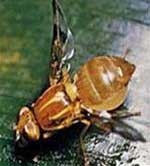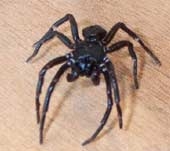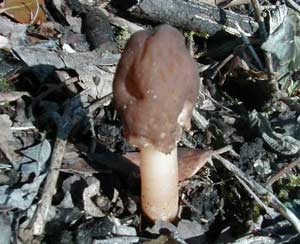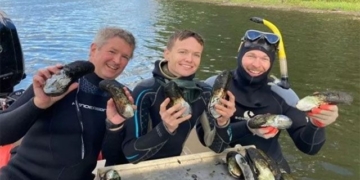The disappearance of this species has left scientists deeply regretful.
In 1918, Lord Howe Island, located between Australia and New Zealand, experienced an unexpected “incident” following the sinking of the ship Makambo. The black rats that escaped from this ship began to overrun the island, reproducing uncontrollably and wiping out many native species, including the Lord Howe stick insect.
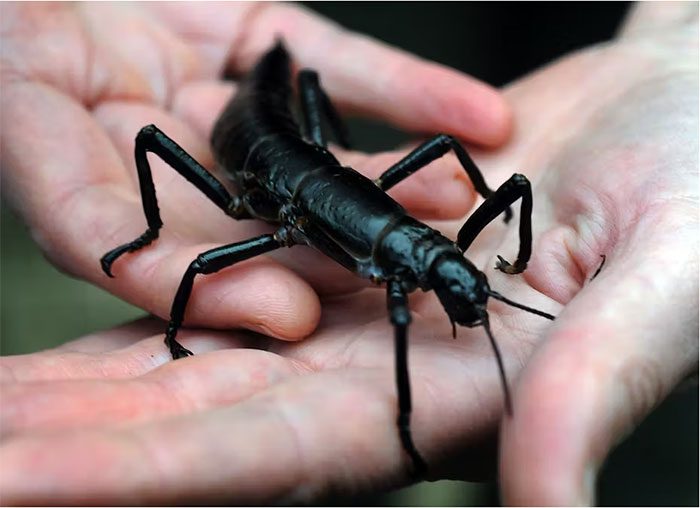 Lord Howe stick insect. (Photo: NYT)
Lord Howe stick insect. (Photo: NYT)
The extinction of the Lord Howe stick insect has caused great regret among scientists, as it is considered one of the most unusual insects in the world.
What exactly is the Lord Howe stick insect? Why is it so significant?
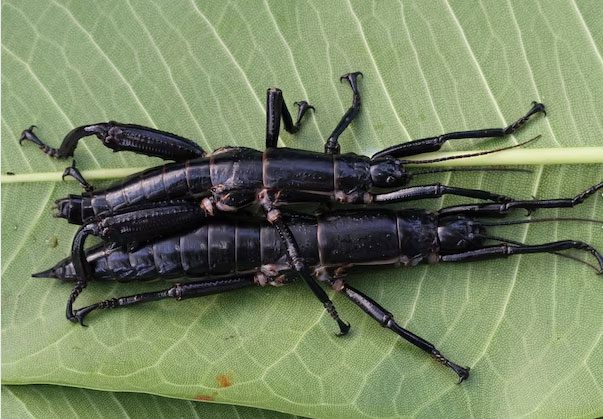
This is one of the strangest insects in the world. (Photo: NYT)
The Lord Howe stick insect (scientific name: Dryococelus australis), also known as the “tree lobster”, is an insect that resides on Lord Howe Island.
According to The Conversation, the Lord Howe stick insect belongs to an ancient group of invertebrates, nicknamed “Jurassic insects”. They are flightless, measuring about 15 cm in length and weighing around 25 grams. Males are smaller than females, and their hind legs are curved, spiny, and more muscular. Males often show affection towards females by wrapping their three legs around them for protection while they sleep.

The Lord Howe stick insect is also known as the “tree lobster.” (Photo: NYT)
They typically feed on vegetation at night and hide during the day in nests made from plant debris or bushy roots. In their nests, they huddle together for protection against predators. Sometimes they can be seen congregating in groups as if sharing the same hiding place.
The females lay eggs while hanging from branches. The eggs hatch nine months later. The young stick insects are bright green and active during the day, but as they mature, they turn black and become nocturnal.
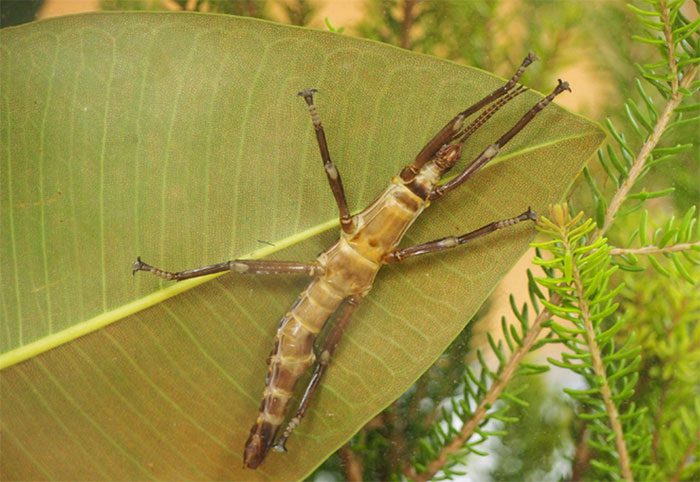
Young stick insects are bright green and active during the day. (Photo: NYT)
In 2001, scientists discovered a small population of about 20 insects that closely resembled the Lord Howe stick insect on Ball’s Pyramid, approximately 23 km off the coast of Lord Howe Island. Initially, scientists mistook them for a similar species.
Ball’s Pyramid is a rock stack, a remnant of a shield volcano and its caldera. This island rises 562 meters high while measuring only 1,100 meters in length and 300 meters in width, making it the highest volcanic remnant in the world. The island has steep, eroded terrain, extremely harsh living conditions, and a lack of food, yet these stick insects continue to survive there.
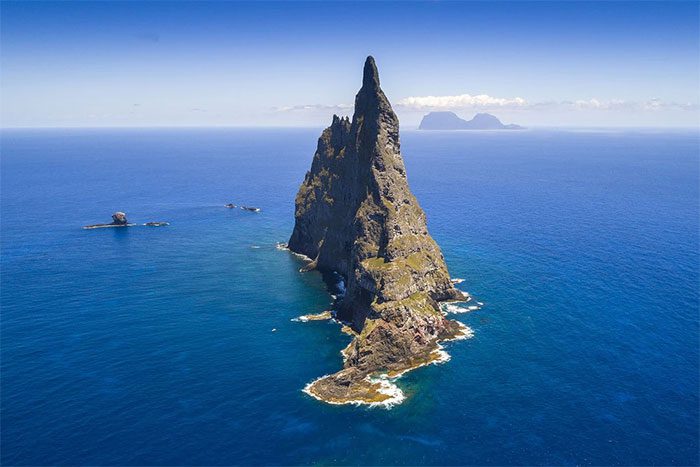
In 2001, scientists discovered a small population of about 20 insects that closely resembled the Lord Howe stick insect on Ball’s Pyramid. (Photo: Atlas Obscura)
How they made it to the top of the island remains a mystery; scientists captured four of them for breeding. They compared their DNA with extracts from preserved specimens in museums. The results confirmed that the insects found on Ball’s Pyramid were indeed the Lord Howe stick insect. Thus, the Lord Howe stick insect made a remarkable “comeback,” much to the delight of scientists.
Two Lord Howe stick insects from Ball’s Pyramid were named “Adam” and “Eve” and sent to breed at Melbourne Zoo. In 2003, a research team from the New South Wales Department of Wildlife and National Parks returned to Ball’s Pyramid and collected two more breeding pairs, one pair sent to a private breeder in Sydney and the other to Melbourne Zoo.
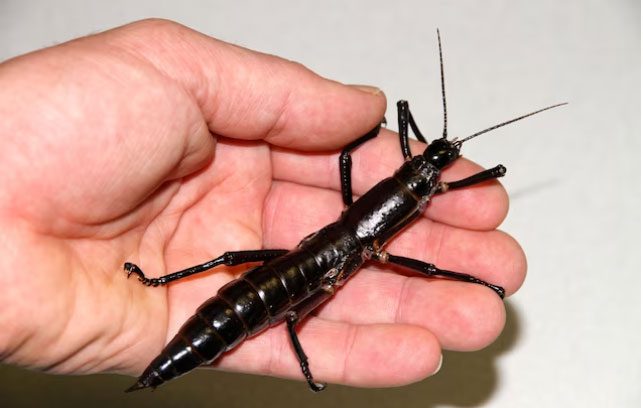
The Lord Howe stick insects made a remarkable “comeback,” much to the delight of scientists. (Photo: NYT)
After initial challenges, they successfully bred in captivity in Melbourne. The ultimate goal was to produce a large number of Lord Howe stick insects to release back onto Lord Howe Island after the successful eradication of the invasive rats.
By 2006, the captive population reached about 50 individuals and thousands of eggs were waiting to hatch. By 2008, the number had increased to 11,376 eggs and 700 insects. Most of them were raised at the Victoria Museum and at the San Diego and Bristol zoos. Subsequently, 20 stick insects were returned to a special habitat on Lord Howe Island.
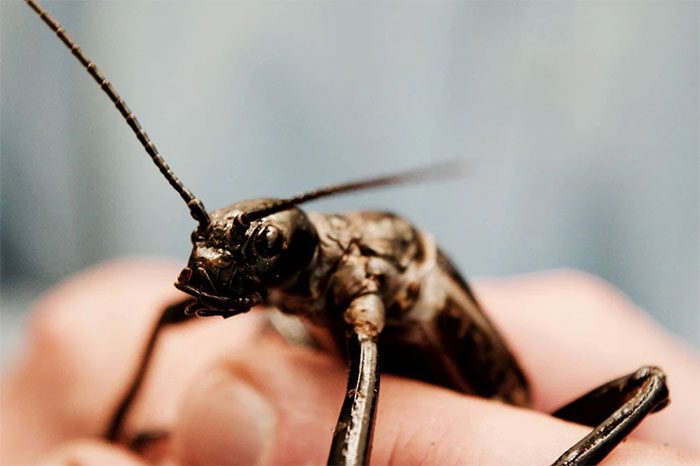
20 stick insects have been returned to a special habitat on Lord Howe Island. (Photo: NYT)
Commenting on this “resurrection,” evolutionary biologist Alexander Mikheyev from the Okinawa Institute of Science and Technology in Japan stated: “Insects on Lord Howe Island have become a symbol of the fragility of island ecosystems. Unlike most extinction stories, this discovery gives us a second chance.”








































